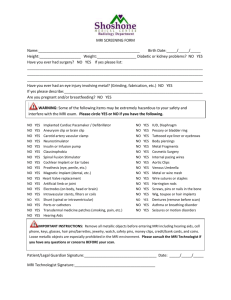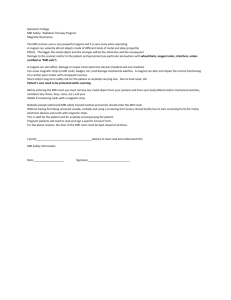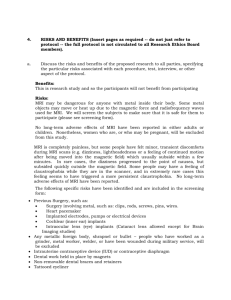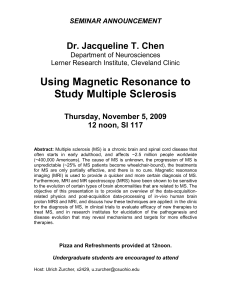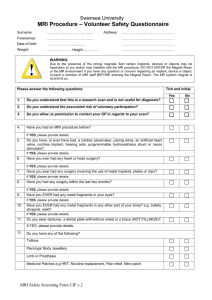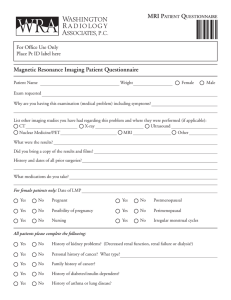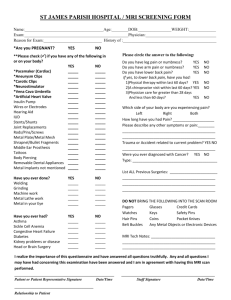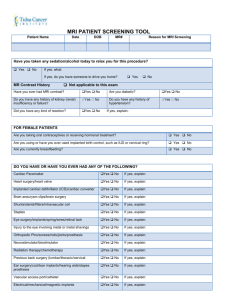Magnetic Resonance Imaging - Sheridan Memorial Hospital and
advertisement
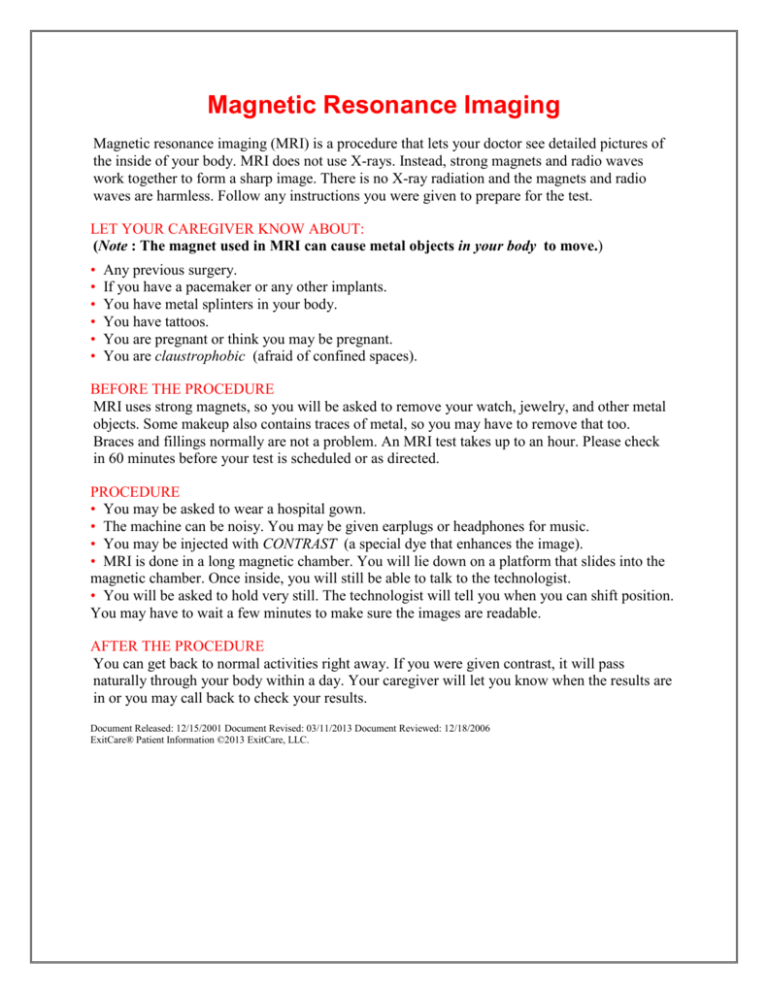
Magnetic Resonance Imaging Magnetic resonance imaging (MRI) is a procedure that lets your doctor see detailed pictures of the inside of your body. MRI does not use X-rays. Instead, strong magnets and radio waves work together to form a sharp image. There is no X-ray radiation and the magnets and radio waves are harmless. Follow any instructions you were given to prepare for the test. LET YOUR CAREGIVER KNOW ABOUT: (Note : The magnet used in MRI can cause metal objects in your body to move.) • • • • • • Any previous surgery. If you have a pacemaker or any other implants. You have metal splinters in your body. You have tattoos. You are pregnant or think you may be pregnant. You are claustrophobic (afraid of confined spaces). BEFORE THE PROCEDURE MRI uses strong magnets, so you will be asked to remove your watch, jewelry, and other metal objects. Some makeup also contains traces of metal, so you may have to remove that too. Braces and fillings normally are not a problem. An MRI test takes up to an hour. Please check in 60 minutes before your test is scheduled or as directed. PROCEDURE • You may be asked to wear a hospital gown. • The machine can be noisy. You may be given earplugs or headphones for music. • You may be injected with CONTRAST (a special dye that enhances the image). • MRI is done in a long magnetic chamber. You will lie down on a platform that slides into the magnetic chamber. Once inside, you will still be able to talk to the technologist. • You will be asked to hold very still. The technologist will tell you when you can shift position. You may have to wait a few minutes to make sure the images are readable. AFTER THE PROCEDURE You can get back to normal activities right away. If you were given contrast, it will pass naturally through your body within a day. Your caregiver will let you know when the results are in or you may call back to check your results. Document Released: 12/15/2001 Document Revised: 03/11/2013 Document Reviewed: 12/18/2006 ExitCare® Patient Information ©2013 ExitCare, LLC.


